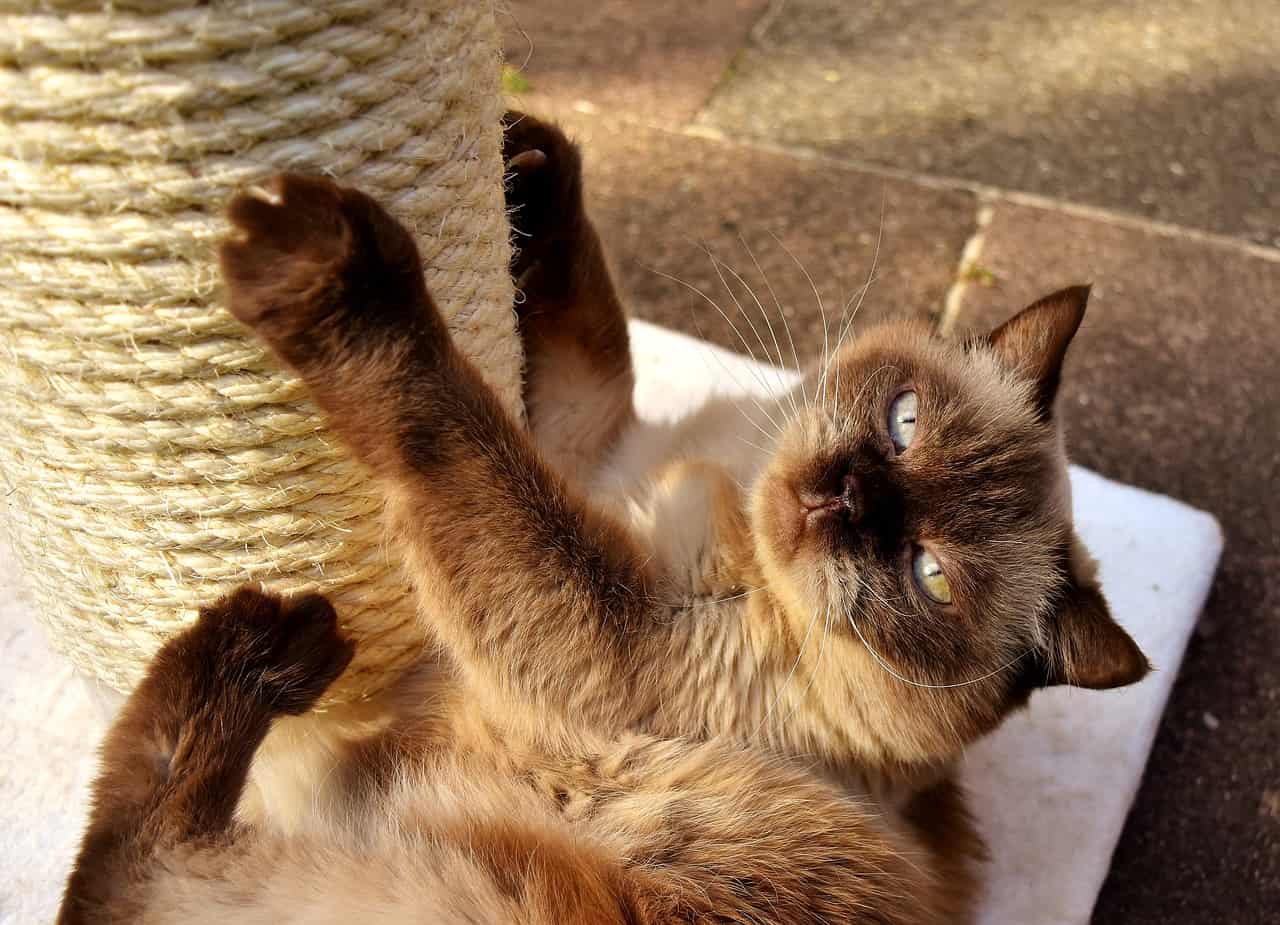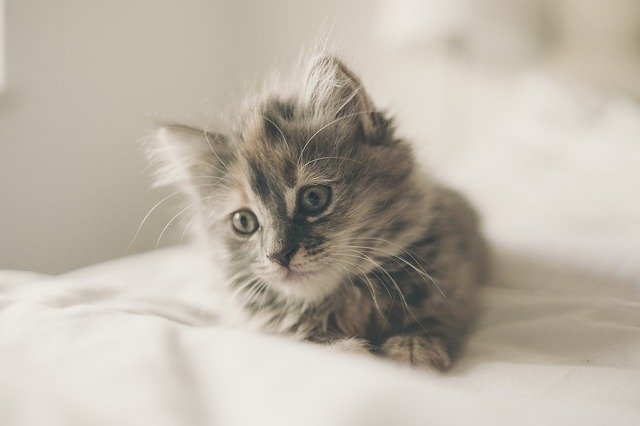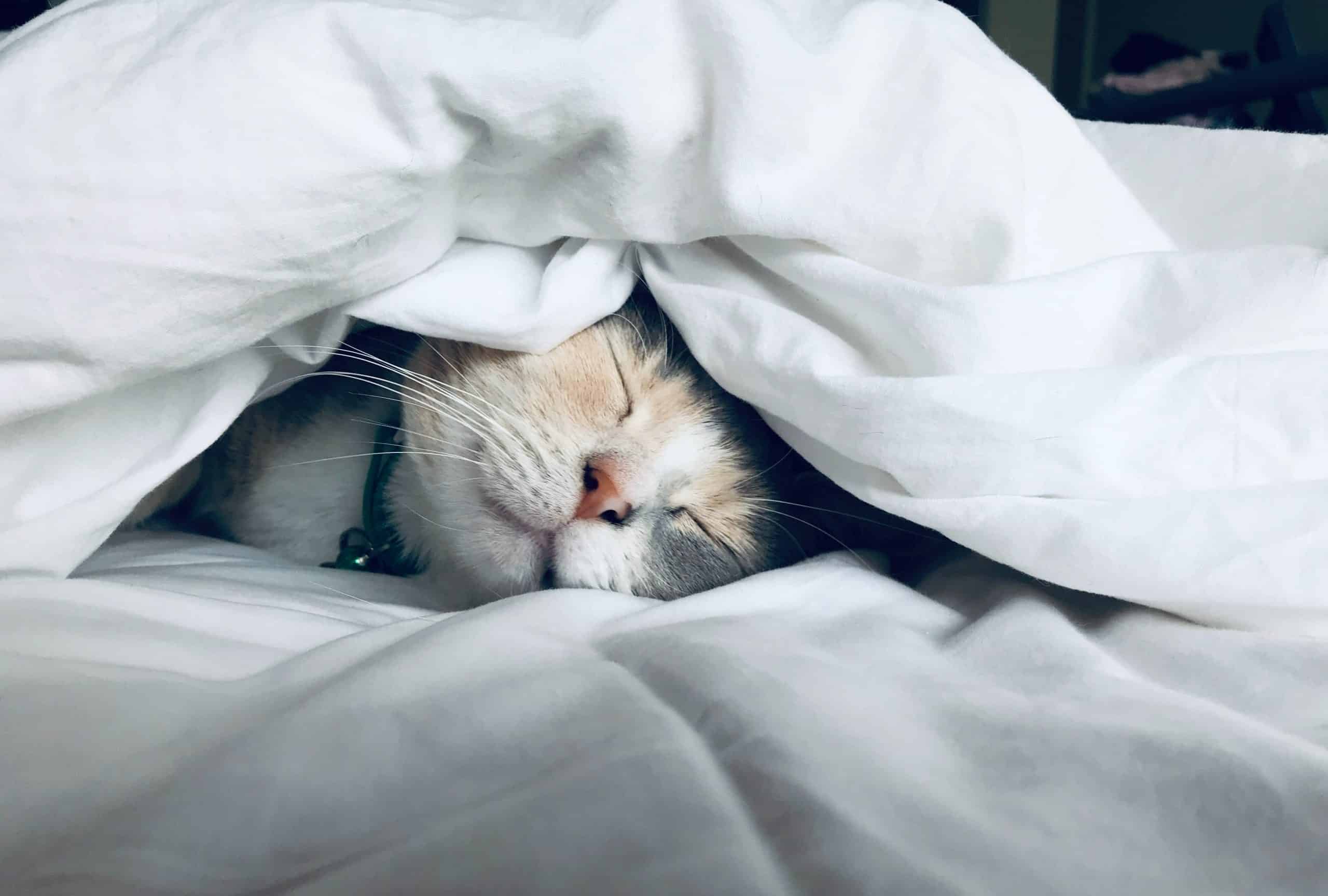What can you do about scratching seats?
Important: be as positive towards your cat as possible. At least don’t punish the cat for shredding your expensive designer seat. There are some tricks by which you can gently help your cat get rid of scratching.
Crabs as a message
Cats use crabs to send messages to other cats. Using crabs, for example, they indicate that this is their territory. By leaving scratches on objects, the cat leaves behind odors in addition to scratches. This is due to the sweat glands on the paws. Even if cats already have a scratching post at their disposal, they will still tend to scratch and leave scratches (scissors) in your home.
Sharpening nails against stress
Some cats destroy furniture because they are bored or because they are trying to find a way to relieve their stress. Playing is a great way to combat boredom. In addition, cats can sharpen nails to show dominance; it is their way of making it clear to other cats that they are the best.
Scratching post: this is how your cat can scratch just fine
To ensure that your cat can express her natural scratching behavior, a scratching post is a must, especially for indoor cats. A traditional scratching post usually consists of a trunk wrapped with sisal and equipped with one or more lying areas. There are also ceiling scratching posts, which are tall and can be secured to the ceiling. Large scratching posts often have multiple trunks, lying areas and burrows. Place the scratching post in a place where your family spends a lot of time, such as the living room. A window view, for example, is an ideal location. Cats love to watch what is happening from a great height, when they are not sleeping.
Different types of scrapers
Like humans, there are different types of scratching cats:
some cats like to scratch vertically, some horizontally and some on a slope.
They also like to alternate. So you can certainly experiment with offering a different type of scratching opportunity (e.g., horizontal or on a slope).
Placing a high scratching post, which they can only get to by climbing up the posts can also help.
Punishing your cat?
It seems obvious to correct the cat when he or she scratches the furniture. However, a cat has an innate instinct to scratch. When you get angry when the cat does this, it has a harmful effect on the animal, making it feel insecure and stressed. As a result, the cat feels encouraged to scratch even more. Besides, punishment is of no use at all, you only give attention to unwanted behavior.
How does the cat learn to scratch in the right place?
Option 1: Scratching areas
To prevent scratching furniture, it is very important where you put the scratching post. Make sure your cat can reach it easily and place the scratching furniture in a good spot. Does your cat scratch in multiple locations? Then it is wise to offer multiple scratching options. For optimal effectiveness, it is recommended to place a scratching object next to the cat’s sleeping place, so that your cat, after waking up, can have a nice scratch….
Option 2: Catnip on the scratching post
When you have a scratching post, your cat might gravitate toward it. Before your cat explores the pole, you can rub it with catnip or valerian drops. Many cats like this, but a few may become irritated by it. In that case, it is wise to take a different approach. Catnip, also known as catnip, is a perfect tool to lure your cat to the scratching post. It mimics scratch markings so cats are often attracted to it. You can also use it to make cat toys more attractive.
Option 3: Playing toward the pole
Engage in a playful way with your cat’s favorite toy. For example, start with a rod and finish with the toy on top of the scratching area so the cat can jump on it. Make sure the cat gets its hands on the rod regularly. To encourage scratching in the scratching area, you can also scratch with your own nails.
Option 4: Rewarding good scratching
Try getting your cat used to scratching by specifically naming it while it is happening. Then reward your cat with some treats. Practice this for 3 days and ask to scratch earlier and earlier. If you have a playful cat, you can also turn it into a fun game using a toy. If your cat wants to scratch in the wrong places, call him to you and, if necessary, lure him with some treats to a place where he is allowed to scratch. If necessary, place an additional scratching object right next to where he wanted to scratch. If your cat is not playful but is used to being lifted, you can put him on the appropriate scratching spot and this can be a good way to get used to the scratching spot. However, be careful if your cat is not used to this, the cat may get a bad link with the new scratching post and being lifted.
Option 5: Soothing with sound
Cats become quiet when they hear specific sounds. Like humans listening to their favorite song, cats immediately feel more relaxed. Special playlists are available for this purpose to be used in stressful moments, as well as to get your cat used to hearing it on a regular basis. This is how you create a zen experience for your furry friend!
Option 6: Spay or neuter cat
Hormones can cause unwanted behavior in cats such as spraying in males, heat in cats and even biting and scratching. Many owners therefore have their cat or kitty spayed or neutered, which not only helps reduce unwanted behavior, but also has other benefits and is even required by law. This procedure can usually be done as early as 6 months of age. If you choose to have your cat or kitty “helped,” your animal will experience much less discomfort at a young age than if you have it done later. Therefore, think carefully before making a final decision – the sooner you have the procedure done, the better for your cat or kitty.
Option 7: Letting the cat outside
Cats that are outside a lot have the ability to groom their nails and mark territory by scratching trees, woodwork and other hard, rough surfaces. This gives these cats a greater scratching opportunity than those who always stay indoors. As a result, a cat that gets outside a lot is less likely to scratch furniture unwittingly than cats that are always inside.
Option 8: Spend more time with your kitty
Everyone needs attention, even your cat or kitty! Exercise and play with your pet is therefore essential, regardless of whether or not they have access to the outside world, are spayed or have a scratching post. Therefore, make sure your cat has plenty of toys to play with and give them attention by playing with them.
Option 9: nail clipping cat
Regular nail trimming can reduce damage to furniture. This is because cat claws become shorter and thinner if you trim them regularly. With shorter claws, cats can cause less damage to furniture. In addition, it is easier for your cat to walk and run around if you cut the nails shorter.
Clipping your cat’s nails is a simple process that can be done with a special cat nail clipper. In doing so, be sure to avoid cutting into the bloodstream! If you have a cat clipper, make sure the clipper is the right size for your cat.
If your cat is on vacation with us, you can also choose to have us cut your cat’s nails during your vacation at the hotel, provided your cat allows it.



